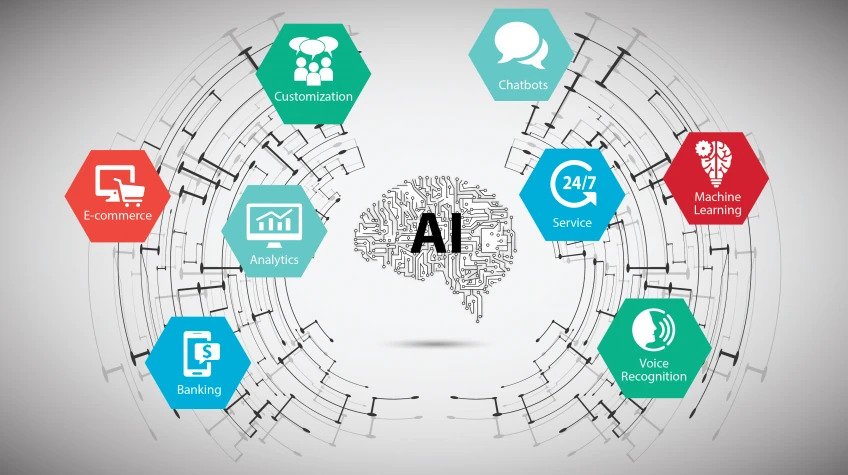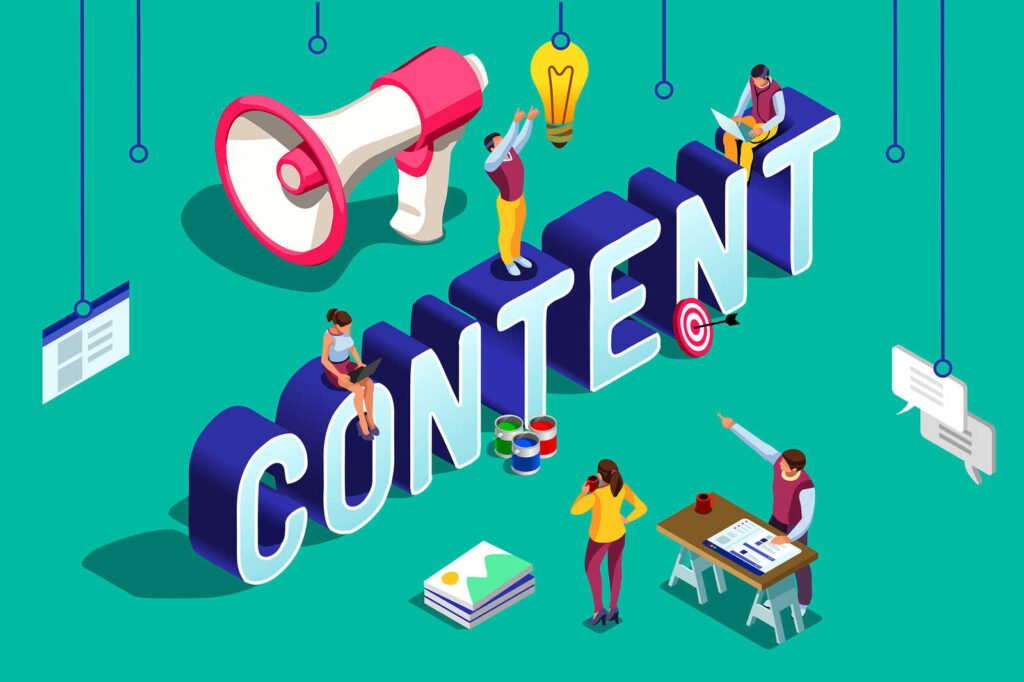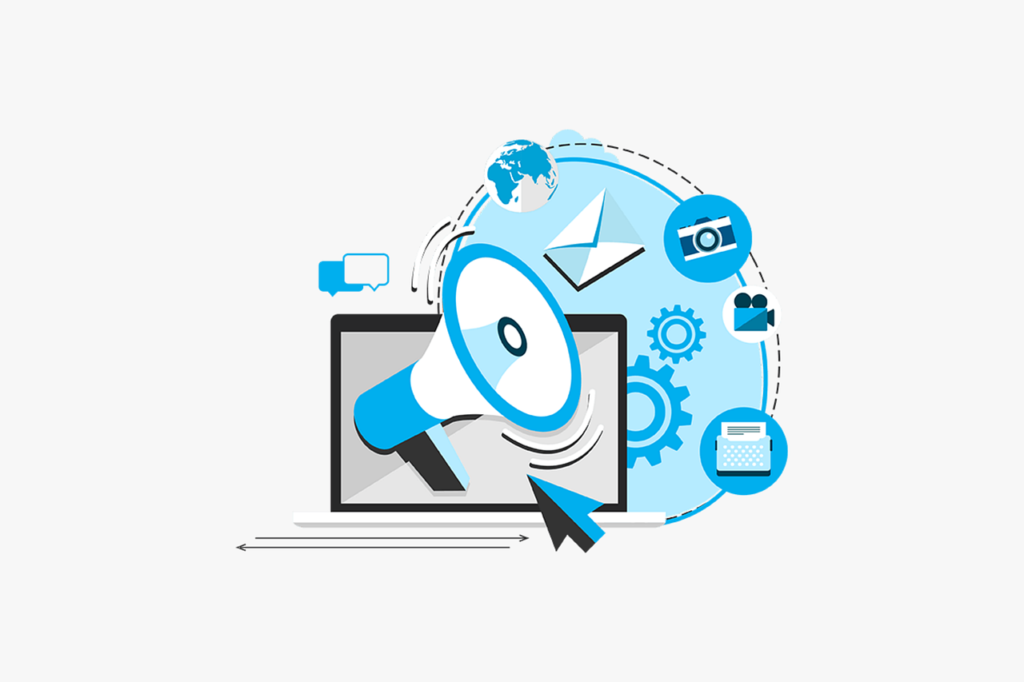Creating content can often feel like an uphill battle. You have to brainstorm ideas, research extensively, draft, revise, and polish before finally hitting publish. What if I told you there was an easier way? Thanks to advancements in artificial intelligence, you can now streamline your content creation process. AI tools are here to lend a helping hand, making the task not just easier but also more efficient. In this guide, we will explore how you can leverage AI tools to create compelling content.
Understanding AI Tools for Content Creation
What Are AI Content Creation Tools?
AI content creation tools are software programs that use artificial intelligence to generate written content. These tools can write articles, create marketing copy, draft social media posts, and more.
They analyze patterns in text, learn from large datasets, and mimic human writing to produce natural-sounding content.
Why Use AI Tools for Content Creation?
The benefits of using AI tools are immense. They can save you time, help you overcome writer’s block, and maintain consistency in your writing.
AI tools can also handle repetitive tasks, freeing you up to focus on more strategic aspects of your content strategy.
Getting Started with AI Content Creation
Identifying Your Content Goals
Before diving into AI content creation, it’s essential to identify your content goals. As a startup founder, you need to understand what you aim to achieve with your content.
Are you looking to increase brand awareness, generate leads, improve customer engagement, or establish thought leadership? Clearly defining your goals will help you select the right AI tools and create content that aligns with your objectives.
This strategic clarity ensures that every piece of content contributes to your overall business goals.
Mapping Out Your Content Strategy
A well-defined content strategy is crucial for leveraging AI tools effectively. Start by mapping out your content strategy, which should include your target audience, content themes, and distribution channels.
Identify the key topics and themes that resonate with your audience and align with your brand’s message. Use AI tools to analyze market trends and customer preferences, which can provide valuable insights for your content themes.
By having a clear strategy in place, you can ensure that your AI-generated content is relevant and impactful.
Choosing the Right AI Tools for Your Needs
The next step is choosing the right AI tools tailored to your specific needs. Different AI tools offer various functionalities, from content generation to SEO optimization and social media management. Evaluate tools based on their capabilities and how they fit into your content strategy.
For instance, if your primary goal is SEO, tools like Surfer SEO or MarketMuse might be ideal. For content generation, consider tools like GPT-4 or Jasper.
Ensure the tools you select integrate well with your existing workflows and platforms to streamline the content creation process.
Creating a Content Calendar
A content calendar is an invaluable tool for organizing and planning your content. Use AI tools to help generate ideas and fill your calendar with a consistent posting schedule.
AI can analyze engagement data to suggest the best times to publish content, ensuring maximum visibility and impact. Your content calendar should include deadlines for drafts, revisions, and final publications, helping you stay organized and on track.
Regularly updating your calendar based on performance insights from AI analytics can help you adapt and improve your content strategy over time.
Training Your AI Tools
To get the most out of AI tools, it’s crucial to train them to understand your brand voice and style. This involves providing the AI with ample examples of your preferred writing style and tone.
You can do this by uploading previous content pieces or drafting a style guide that outlines your brand’s voice. The more context you provide, the better the AI will perform in generating content that aligns with your brand identity.
Regularly update the AI’s training data with new examples to keep it aligned with any changes in your brand’s voice.
Creating Initial Content Drafts
When creating initial content drafts, start by providing the AI with detailed prompts. These prompts should include specific keywords, topics, and any key points you want to cover.
The more detailed your prompts, the more relevant and accurate the AI-generated content will be. Once the AI generates a draft, review and refine it to ensure it meets your quality standards.
This iterative process helps you gradually improve the AI’s output, making future drafts more aligned with your expectations.
Utilizing AI for Research and Insights
AI tools can significantly enhance your research process by providing data-driven insights. Use AI to conduct market research, analyze competitors, and identify trending topics.
Tools like BuzzSumo and SEMrush can help you discover popular content in your industry and understand what resonates with your audience. Incorporate these insights into your content creation process to produce highly relevant and engaging content.
This data-driven approach ensures your content is not only high-quality but also strategically aligned with market demands.
Incorporating Feedback Loops
Feedback loops are essential for continuous improvement in AI content creation. Regularly review the performance of your AI-generated content using analytics tools.
Analyze metrics such as engagement rates, conversion rates, and SEO rankings to gauge effectiveness. Use this feedback to refine your prompts and training data, ensuring the AI continuously learns and improves.
Additionally, gather feedback from your team and audience to identify areas for improvement and new content opportunities. This iterative approach helps you stay agile and responsive to changing market conditions.
Building a Content Review Process
Even with AI, a robust content review process is critical. Establish a workflow that includes multiple stages of review, from initial drafts to final approvals.
Assign team members to review AI-generated content for accuracy, coherence, and alignment with your brand voice. Use collaboration tools like Google Docs or Notion to facilitate the review process and track changes.
This thorough review process ensures that your content maintains high quality and relevance, regardless of the initial AI input.
Scaling Content Production
Once you have a well-oiled content creation machine, consider scaling your efforts. AI tools can help you produce more content in less time, allowing you to expand your reach and influence. Develop a scalable content production model by creating templates and standard operating procedures (SOPs) for your team.
Use AI to automate repetitive tasks and free up your team to focus on strategic activities. As you scale, continue to monitor performance metrics and iterate on your strategy to ensure sustained growth and impact.
Creating Content with AI Tools
Brainstorming Ideas
AI tools can assist in brainstorming content ideas. If you’re stuck on what to write about, use the AI to generate a list of topics.
Simply input a broad theme, and the tool will provide you with several ideas. This can be especially helpful for content calendars and long-term planning.
Drafting Articles
One of the most powerful uses of AI tools is drafting articles. Start by inputting your topic and any specific points you want to cover.
The AI will generate a draft that you can then refine and edit. This initial draft can save you hours of writing time.
Enhancing Your Content
AI tools can also help enhance your content. They can suggest better phrasing, correct grammar mistakes, and ensure your writing flows well.
Some tools even offer SEO suggestions, helping you optimize your content for search engines.
Best Practices for Using AI Tools
Establishing Clear Guidelines
To maximize the effectiveness of AI tools, establish clear content guidelines. As a startup founder, your brand’s voice, tone, and style should be consistently reflected in all content.
Create a comprehensive style guide that outlines these elements, including preferred language, formatting rules, and any specific terminology unique to your brand.
Share this guide with your team and integrate it into your AI tool’s training data. This ensures that the AI-generated content aligns with your brand identity, providing a seamless and professional output.
Fostering Collaboration Between AI and Human Writers
Encourage collaboration between AI tools and human writers to create the best possible content. AI can handle the heavy lifting of generating initial drafts, performing keyword research, and optimizing for SEO.
Human writers can then refine the content, adding creativity, personality, and nuanced understanding. Establish a collaborative workflow where AI tools assist with data-driven tasks, and human writers focus on adding value through their expertise and insights.
Use AI as a Collaborator, Not a Replacement
Think of AI as a collaborator rather than a replacement. Use it to enhance your work, not do it entirely for you. The best results come from a combination of human creativity and AI efficiency.
Keep Up with AI Developments
AI technology is constantly evolving. Stay updated with the latest developments and features of your chosen AI tool.
This will ensure you’re leveraging the tool’s full potential and keeping your content strategy ahead of the curve.
Integrating AI with Content Management Systems
Integrate your AI tools with your Content Management System (CMS) for a seamless workflow. This integration allows you to automate various aspects of content creation, from drafting to publishing.
For instance, tools like WordPress plugins and API integrations can streamline content scheduling, optimization, and distribution. This automation frees up your team to focus on strategic tasks, improving overall efficiency and productivity.
Monitoring and Adapting to AI Developments
AI technology is rapidly evolving, and staying updated with the latest developments is crucial. Regularly monitor advancements in AI tools and features to ensure you are leveraging the most effective solutions.
Participate in AI-focused webinars, workshops, and industry conferences to stay informed. Adapting to new AI capabilities can provide a competitive advantage, allowing you to continually refine and enhance your content strategy.
Optimizing Content for SEO with AI Tools
Keyword Research
Effective keyword research is the foundation of SEO-friendly content. AI tools can simplify this process by analyzing vast amounts of data to identify the most relevant keywords for your niche.
Tools like SEMrush and Ahrefs, which integrate AI capabilities, can help you find keywords with high search volume and low competition. Simply enter a broad keyword related to your topic, and these tools will generate a list of related keywords along with valuable metrics.
Crafting SEO Titles and Meta Descriptions
AI can also assist in crafting SEO-optimized titles and meta descriptions. Titles should be engaging and include your primary keyword, while meta descriptions should provide a brief summary of your content with a call-to-action.
Tools like Headline Analyzer and SEOptimer can help you create compelling titles and descriptions that not only attract clicks but also improve your search engine rankings.
Structuring Your Content
A well-structured article is crucial for both reader engagement and SEO. AI tools can help you outline your content effectively.
Begin with a clear introduction, followed by subheadings that organize your content into digestible sections. This structure not only makes your content more readable but also helps search engines understand the hierarchy and relevance of your information.
Optimizing Content for Readability
Readability is a key factor in SEO. AI tools like Grammarly and Hemingway can analyze your text for readability issues, suggesting changes to improve clarity and flow.
They can identify complex sentences, passive voice, and other elements that may hinder readability. By following these suggestions, you can create content that is easy to read and understand, which can lead to longer on-page time and lower bounce rates.
Enhancing Engagement with AI Tools

Creating Personalized Content
Personalization is a powerful way to engage your audience. AI tools can analyze user data to help you create personalized content that resonates with your audience.
For example, tools like HubSpot and Marketo use AI to segment your audience and tailor content to different groups based on their preferences and behaviors.
Crafting Catchy Headlines
Headlines are often the first thing a reader sees, and they play a critical role in driving engagement. AI-powered headline generators, such as CoSchedule’s Headline Analyzer, can help you craft headlines that grab attention and encourage clicks.
These tools analyze your headline for factors like length, sentiment, and keyword usage, providing a score and suggestions for improvement.
Generating Visual Content
Visuals are essential for making your content more engaging. AI tools like Canva and Lumen5 can help you create stunning visuals without any design skills.
Canva offers a wide range of templates and design elements, while Lumen5 can turn your text into engaging videos. These tools can help you add visual appeal to your content, making it more attractive and shareable.
Optimizing Social Media Content
AI tools can also enhance your social media strategy. Tools like Buffer and Hootsuite use AI to analyze your audience’s behavior and suggest the best times to post.
They can also generate social media content tailored to different platforms, ensuring your message is optimized for each audience.
Overcoming Challenges with AI Content Creation
Dealing with Writer’s Block
Writer’s block can be a major obstacle, but AI tools can help you overcome it. If you’re struggling to start, use an AI content generator to draft an initial paragraph or outline.
This can provide the spark you need to continue writing. Additionally, AI tools can suggest ideas and directions for your content, helping you get past any mental roadblocks.
Ensuring Originality
One concern with AI-generated content is originality. While AI tools are excellent at producing coherent and informative text, they can sometimes generate content that is too similar to existing material.
To avoid this, always review and edit AI-generated content. Use plagiarism detection tools like Copyscape or Turnitin to ensure your content is unique. Adding your personal insights and experiences can also make your content stand out.
Maintaining Quality
Quality control is essential when using AI tools. While AI can produce well-written text, it may lack the nuanced understanding of a human writer.
Always proofread AI-generated content to correct any inaccuracies or awkward phrasings. Tools like Grammarly can assist with grammar and style, but a thorough manual review is necessary to maintain high-quality standards.
Handling Complex Topics
AI tools are great for generating content on general topics, but they may struggle with complex or niche subjects. If your content requires deep expertise, use AI to create a draft and then refine it with your knowledge.
This hybrid approach leverages the efficiency of AI while ensuring the depth and accuracy required for specialized topics.
Integrating AI Tools into Your Workflow
Streamlining Content Creation
Integrating AI tools into your workflow can streamline the entire content creation process. Start by using AI for brainstorming and outlining.
Once you have a clear structure, use the AI to draft sections of your content. After generating the initial draft, refine and polish the text manually. This approach saves time while allowing you to maintain control over the final output.
Collaborating with Team Members
AI tools can enhance collaboration among team members. Shared AI tools can help your team brainstorm ideas, draft content, and optimize for SEO collectively.
Use project management tools like Trello or Asana to coordinate tasks and ensure everyone is on the same page. AI can also assist in creating content guidelines and templates, making it easier for team members to produce consistent and high-quality content.
Automating Repetitive Tasks
AI tools excel at automating repetitive tasks, freeing you up to focus on more creative aspects of content creation. Use AI to automate tasks like keyword research, grammar checking, and SEO optimization.
This not only saves time but also reduces the risk of human error. Tools like SEMrush and Grammarly can automate these tasks efficiently, ensuring your content is both optimized and error-free.
Case Studies: Success Stories with AI Content Creation
Small Business Success
Consider a small business that used AI tools to enhance its content marketing efforts. By leveraging AI for keyword research and SEO optimization, the business saw a significant increase in organic traffic.
The AI-generated content was polished by human editors, ensuring it resonated with their target audience. As a result, the business experienced higher engagement and conversion rates.
E-commerce Enhancement
An e-commerce company used AI to generate product descriptions and blog posts. The AI tools helped them produce large volumes of content quickly, allowing them to keep their website fresh and updated.
The content was optimized for SEO, leading to improved search engine rankings. This increase in visibility translated into higher sales and customer engagement.
Content Agency Efficiency
A content agency integrated AI tools into its workflow to handle a growing number of client projects. AI helped them generate initial drafts, which were then refined by their team of writers.
This approach allowed the agency to take on more clients without compromising on quality. The efficiency gained through AI integration led to increased revenue and client satisfaction.
Future Trends in AI Content Creation

Advancements in Natural Language Processing
Natural Language Processing (NLP) is at the core of AI content creation. As NLP technology advances, AI tools will become even more adept at understanding context, tone, and nuance.
This will result in more sophisticated and human-like content generation. Keeping an eye on these advancements can help you stay ahead of the curve and leverage the latest capabilities.
Increased Personalization
Future AI tools will offer even greater personalization options. By analyzing user data, these tools will be able to create highly personalized content tailored to individual preferences and behaviors.
This will enhance user engagement and improve conversion rates. Embracing these personalization features can give your content a competitive edge.
Integration with Other Technologies
AI content creation tools will increasingly integrate with other technologies, such as virtual reality (VR) and augmented reality (AR).
This will open up new possibilities for creating immersive and interactive content. Staying informed about these integrations can help you explore innovative ways to engage your audience.
Ethical Considerations
As AI content creation becomes more prevalent, ethical considerations will gain importance. Ensuring transparency, avoiding misinformation, and respecting user privacy will be key challenges.
Adopting ethical guidelines and staying informed about industry standards will help you use AI responsibly and maintain your audience’s trust.
Tips for Maximizing the Benefits of AI Content Creation
Continuous Learning and Adaptation
The field of AI content creation is dynamic, with new tools and features emerging regularly. To maximize the benefits, it’s crucial to stay updated with the latest developments.
Participate in webinars, read industry blogs, and join online communities focused on AI and content marketing. Continuous learning will enable you to leverage the latest advancements and incorporate best practices into your workflow.
Experimenting with Different Tools
Don’t limit yourself to one AI tool. Experiment with different tools to find the ones that best meet your needs. Each tool has unique features and strengths, and using a combination of tools can provide a more comprehensive solution.
For example, you might use one tool for keyword research, another for drafting, and a third for SEO optimization.
Customizing AI Output
Most AI tools allow you to customize the output by adjusting settings and providing specific instructions. Take advantage of these customization options to align the AI-generated content with your brand voice and style.
Input detailed guidelines and examples to train the AI on your preferences. This will result in more tailored and effective content.
Evaluating and Iterating
Regularly evaluate the performance of your AI-generated content. Use analytics to track key metrics like engagement, conversion rates, and SEO rankings.
Identify areas where the content is performing well and where improvements are needed. Iterate on your approach based on these insights to continuously improve the quality and effectiveness of your content.
Balancing AI and Human Input
The best results often come from a balanced approach that combines AI efficiency with human creativity. Use AI to handle repetitive and time-consuming tasks, but don’t overlook the value of human input.
Human writers can add unique perspectives, emotional depth, and a personal touch that AI cannot replicate. Striking the right balance will enhance the overall quality of your content.
Common Misconceptions about AI Content Creation
AI Will Replace Human Writers
One of the most common misconceptions is that AI will replace human writers. While AI tools are powerful, they are not a substitute for human creativity and expertise.
AI can assist with many aspects of content creation, but it cannot replicate the nuanced understanding and personal experiences that human writers bring to the table.
Instead of viewing AI as a replacement, consider it a valuable tool that enhances your capabilities.
AI Content Lacks Quality
Another misconception is that AI-generated content lacks quality. While early versions of AI tools produced content that was often robotic and repetitive, modern AI tools have made significant advancements.
With proper input and customization, AI can generate high-quality content that is both informative and engaging. However, human review and editing are still essential to ensure the highest quality.
AI Is Too Complicated to Use
Some people believe that AI tools are too complicated to use. While it’s true that AI technology can be complex, most AI content creation tools are designed to be user-friendly.
They come with intuitive interfaces and comprehensive tutorials to help you get started. With a little practice, you can quickly learn to use these tools effectively.
The Future of Content Creation
AI and Human Collaboration
The future of content creation lies in the collaboration between AI and humans. AI will continue to evolve, offering more sophisticated tools that can handle increasingly complex tasks.
Human writers will work alongside AI, leveraging its capabilities to enhance their creativity and productivity. This synergy will lead to more innovative and impactful content.
Expansion into New Formats
As AI technology advances, we can expect to see its application expand into new formats. AI-generated content will go beyond text to include audio, video, and interactive media.
This will open up new possibilities for content creators, allowing them to engage audiences in diverse and immersive ways.
Ethical and Responsible AI Use
As AI becomes more integrated into content creation, ethical considerations will become increasingly important. Content creators will need to navigate issues related to transparency, privacy, and misinformation.
Establishing ethical guidelines and adhering to industry standards will be crucial in ensuring responsible AI use.
Continuous Innovation
The field of AI content creation is still in its early stages, and continuous innovation is expected. New tools and features will emerge, offering even greater capabilities and efficiencies.
Staying informed about these innovations and being willing to adapt will be key to maintaining a competitive edge.
Measuring the Impact of AI-Generated Content

Tracking Performance Metrics
To understand the effectiveness of your AI-generated content, it’s important to track performance metrics. Tools like Google Analytics and HubSpot provide detailed insights into how your content is performing.
You can track metrics such as page views, bounce rates, and conversion rates to gauge the impact of your content.
A/B Testing
A/B testing is a valuable method for comparing different versions of your content to see which performs better. AI tools can automate the A/B testing process, allowing you to test variables like headlines, images, and calls-to-action.
Tools like Optimizely and VWO can help you set up and analyze A/B tests, providing data-driven insights to optimize your content.
Adjusting Strategies Based on Data
The insights gained from performance metrics and A/B testing should inform your content strategy. Use this data to identify what’s working and what isn’t.
AI tools can help you analyze this data and suggest adjustments to improve your content. By continually refining your strategy based on data, you can ensure your content remains effective and relevant.
Wrapping it up
AI tools have revolutionized the content creation landscape, offering unparalleled efficiency and capabilities. By strategically integrating AI into your content processes, you can enhance keyword research, develop effective content clusters, optimize on-page elements, and continuously monitor SEO performance.
For startup founders, leveraging AI means saving time, improving content quality, and staying ahead of competitors. Balancing AI efficiency with human creativity, continuously adapting to new AI advancements, and maintaining ethical standards are key to success. Embrace these strategies to create compelling, high-quality content that drives growth and engagement for your startup.
READ NEXT:
- Content Ideas for Your Marketing Blog
- How to Start the New Year with Fresh Marketing Strategies
- Effective Marketing Strategies for Garage Door Companies
- Marketing Strategies to Grow Your Orthodontic Practice
- How to Attract More Customers to Your Bar and Restaurant





















Comments are closed.